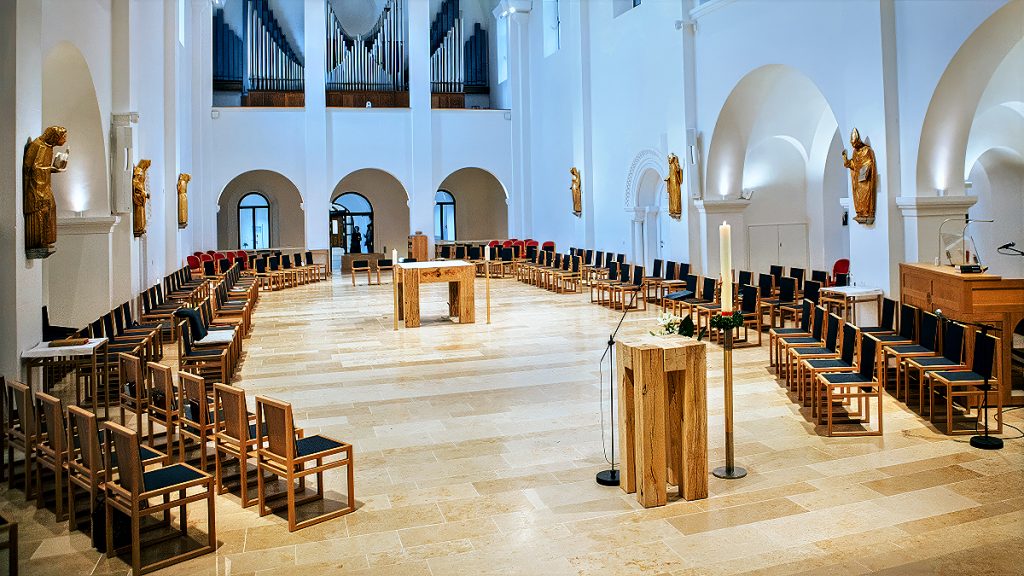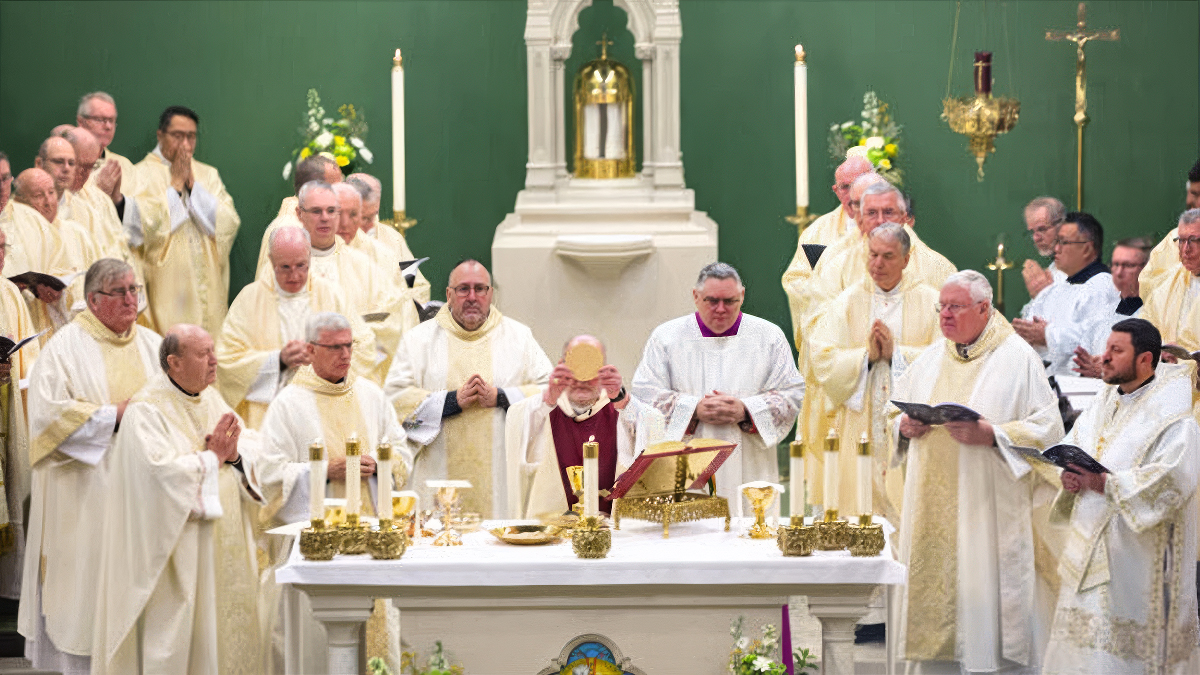On 12 August 2025, a new bishop was ordained in Australia. According to a report, more than 600 people gathered for the celebration from all over the continent.
The image that accompanied the story shows a group of bishops standing around the altar during the Eucharistic Prayer.
On the altar, apart from the large host and principal chalice, were three other chalices and a paten with a small number of hosts. Surely not enough for such a large gathering to commune from the table of sacrifice.
Eucharist in Würzburg
The previous Sunday, on the other side of the world, I participated in a Eucharistic celebration at a convent in Würzburg, Germany. After an engaging homily, the presider moved to the altar.
Here he dedicated breads in a large bowl, and wine in a chalice that could easily hold a magnum of wine. Because it was in the centre of the gathering, all stood around the altar to pray the Eucharistic Prayer.
At the time of communion, ministers approached the table. They first served the elderly who had difficulty with mobility. The rest of us then processed to the table to eat and drink from the memorial sacrifice.

Contrasting practices
In contrast, at least so it appears from the image of the ordination Mass in Australia, only those clerics present shared the Body and Blood of Christ from the Eucharistic table.
Most of the gathered assembly received consecrated hosts not from that Eucharistic sacrifice, but sacramentally from the tabernacle. Neither would anyone but the clerics have been invited to drink from the cup.
A different story
Sacrosanctum Concilium affirmed the ancient tradition that the Eucharistic celebration is the fullest expression of church.
The image of the ordination ceremony tells a different story. That church consists only of bishops and priests, while the rest of the celebrating church is invisible.
Furthermore, the table is set with only clerical participation in mind. It would appear to deliberately exclude the lay assembly from engaging in their proper priestly function of sharing in Christ’s sacrifice from the fourfold meal.
A synodal vision
Conversely, the Eucharistic table at the convent in Germany was both abundant and lavish. It reflected a truly synodal church where all the baptised are called to fully participate as sisters and brothers in memorial sacrifice and in loving communion, ready to leave the table to engage in the mission of Christ.
The call to synodality needs to be reflected in the way we celebrate Eucharist.

- Carmel Pilcher RSJ, PhD is a Liturgy and Culture Consultant and Educator, Darug and Gundungura country.

